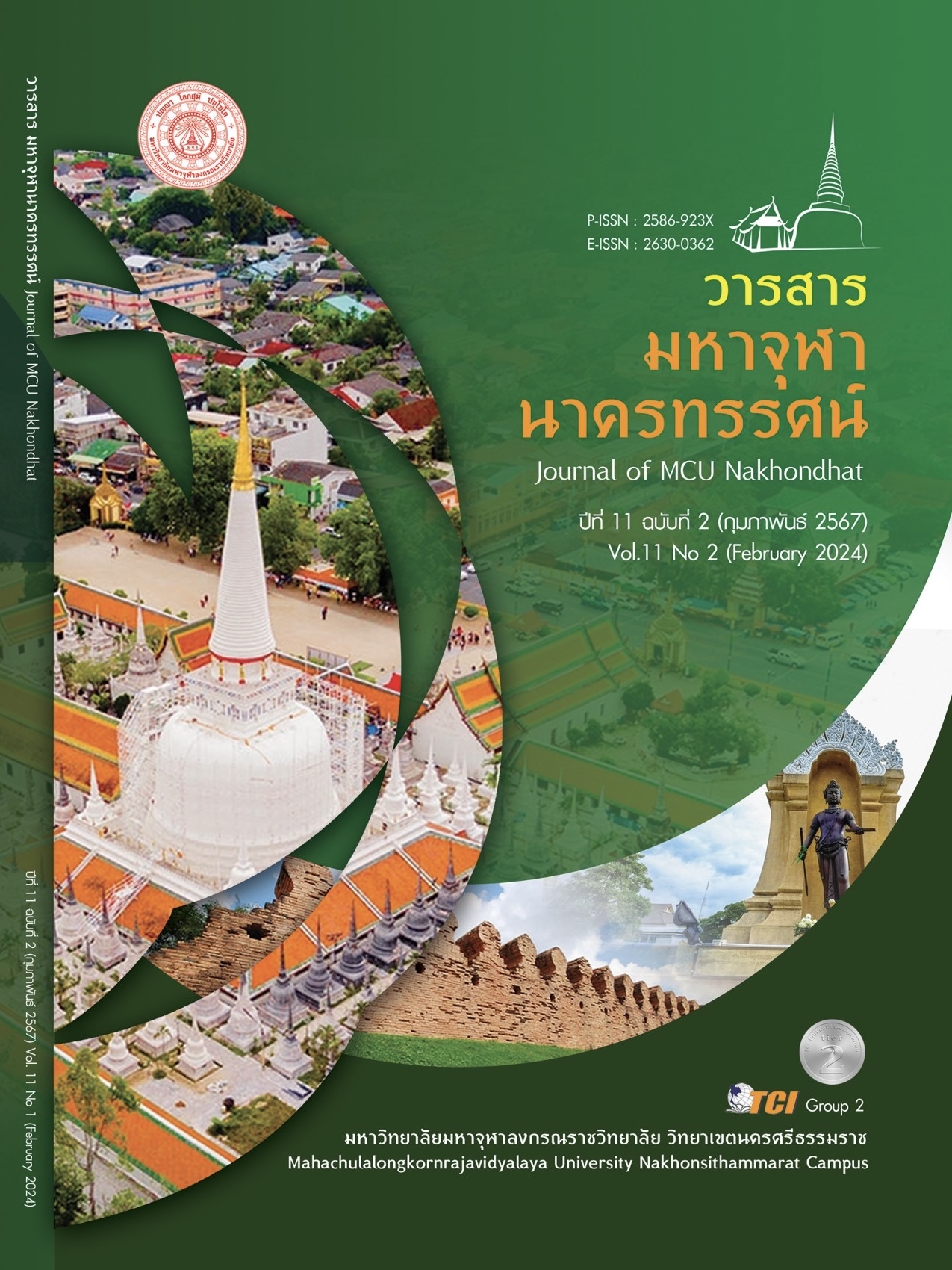FACTORS INFLUENCING THE ACCEPTANCE AND BEHAVIOR OF USING CREATIVE MEDIA APPLICATIONS
Main Article Content
Abstract
This research article the objectives were 1) Investigate the relationship between demographic characteristics and the behavioral patterns of users of creative media applications. 2) Examine the influence of perceived benefits, perceived ease of use, perceived compatibility, and reference groups on the usage behavior of creative media applications. This research is a quantitative study utilizing online questionnaires as a tool for data collection. The study population comprises individuals with experience using free versions of creative media applications, both male and female, aged 18 and above. Specifically, this research focuses on the application Canva. A convenient sample of 400 individuals was selected, and data collection was conducted online using convenience sampling methods. The data were analyzed using descriptive statistics, including frequency distribution, percentages, mean, standard deviation, and inferential statistical analysis to test hypotheses, including one-way ANOVA and multiple regression analysis. The findings indicate that the majority of the sample group are female, aged between 26 to 35 years, hold a bachelor's degree, are employed in private companies, and have an average monthly income of 25,001 to 35,000 Thai Baht. When categorized by gender, age, education level, occupation, and income, there were no significant statistical differences at the 0.05 level in the usage behavior of creative media applications among the sample group. Hypothesis testing revealed that perceived compatibility and reference groups significantly influence the usage behavior of creative media applications at the statistical significance level of 0.05. Among these factors, reference groups had the most substantial combined influence on the usage behavior (β = 0.625).
Article Details

This work is licensed under a Creative Commons Attribution-NonCommercial-NoDerivatives 4.0 International License.
References
กฤษณี เสือใหญ่. (2558). พฤติกรรมการใช้แอปพลิคชันไลน์ความพึงพอใจและการนำไปใช้ ประโยชน์ ของคนในกรุงเทพมหานคร. ใน วิทยานิพนธ์ปริญญาศิลปศาสตรมหาบัณฑิต สาขาวิชานิเทศาสตร์และนวัตกรรม. สถาบันบัณฑิตพัฒนบริหารศาสตร์.
กัญญ์วรา หิรัญพานิช. (2565). ปัจจัยที่มีอิทธิพลต่อการยอมรับและพฤติกรรมการใช้งานแอปพลิเคชัน oneD. ใน วิทยานิพนธ์ปริญญาศิลปศาสตรมหาบัณฑิต สาขาวิชานิเทศาสตร์และนวัตกรรม.มหาวิทยาลัยเกษตรศาสตร์.
วรัญธร พินิจจันทร์. (2563). การยอมรับการใช้งานแอปพลิเคชั่นไทยชนะ. ใน วิทยานิพนธ์ปริญญาศิลปศาสตรมหาบัณฑิต สาขาศิลปศาสตร. มหาวิทยาลัยเกษตรศาสตร์.
ศรัณย์ธร ศศิธนากรแก้ว. (2561). ปัจจัยพยากรณ์ความตั้งใจในการใช้เครือข่ายสังคมออนไลน์ของพระสงฆ์เขตกรุงเทพมหานคร. วารสารมนุษยศาสตร์วิชาการ, 27(2), 258-276.
ศรัณย์ธร ศศิธนากรแก้ว และคณะ. (2563). การยอมรับและพฤติกรรมการใช้เน็ตฟลิกซ์ของประชาชน ในเขตกรุงเทพมหานคร. วารสารวิจัยราชภัฏพระนคร สาขามนุษยศาสตร์และสังคมศาสตร์, 13(2), 177-190.
Blackwell et al.. (1990). Consumer Behavior (6 th ed.). Chicago: Chicago Dryden Press.
Hawkins et al.,. (1998). Consumer Behavior (7th ed). Boston: McGraw-Hill, Inc.
Mowen, J. C., & Minor, M. (1998). Consumer Behavior (5th ed)Prentice-Hall. Retrieved March 20, 2566, from https://www.amazon.com/Consumer-Behavior-5th-John-Mowen/dp/0137371152


